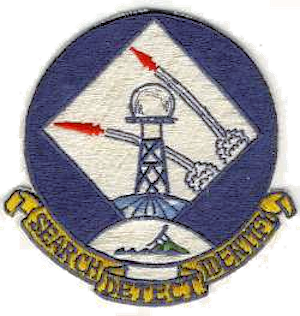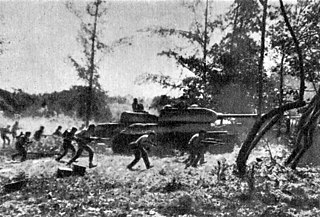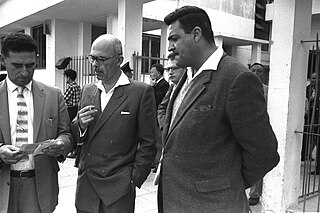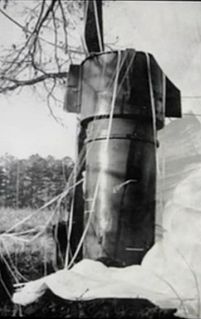 W
WThe 670th Radar Squadron is an inactive United States Air Force unit. It was last assigned to the 26th Air Division, Aerospace Defense Command, operating San Pedro Hill Air Force Station radars while posted at Fort MacArthur, California. It was inactivated on 1 April 1976.
 W
WNRP Afonso de Albuquerque was a warship of the Portuguese Navy, named after the 16th-century Portuguese navigator Afonso de Albuquerque. She was destroyed in combat on 18 December 1961, defending Goa against the Indian Armed Forces Annexation of Goa.
 W
WThe Bay of Pigs invasion was a failed landing operation on the southwestern coast of Cuba in 1961 by Cuban exiles who opposed Fidel Castro's Cuban Revolution. Covertly financed and directed by the U.S. government, the operation took place at the height of the Cold War, and its failure led to major shifts in international relations between Cuba, the United States, and the Soviet Union.
 W
WIsrael Beer was an Austrian-born Israeli citizen convicted of espionage. On March 31, 1961, Beer, a senior employee in the Israeli Ministry of Defense, was arrested under suspicion of espionage for the Soviet Union. A former lieutenant colonel in the IDF, Beer was a well-known military commentator and an acknowledged expert on military history, and he was employed in a civilian position within the Israeli Ministry of Defense to write a book on the history of the 1947–1949 Palestine war. His true identity, his personal history before emigrating to Palestine, and the circumstances of his recruitment to the KGB, have all remained unknown to this day.
 W
WThe Berlin Crisis of 1961 occurred between 4 June – 9 November 1961, and was the last major politic-military European incident of the Cold War about the occupational status of the German capital city, Berlin, and of post–World War II Germany. The Berlin Crisis started when the USSR launched an ultimatum demanding the withdrawal of all armed forces from Berlin, including the Western armed forces in West Berlin. The crisis culminated in the city's de facto partition with the East German erection of the Berlin Wall.
 W
WThe Berlin Wall was a guarded concrete barrier that physically and ideologically divided Berlin from 1961 to 1989. Construction of the wall was commenced by the German Democratic Republic on 13 August 1961. The Wall cut off West Berlin from surrounding East Germany, including East Berlin. The barrier included guard towers placed along large concrete walls, accompanied by a wide area that contained anti-vehicle trenches, beds of nails, and other defenses. The Eastern Bloc portrayed the Wall as protecting its population from fascist elements conspiring to prevent the "will of the people" from building a socialist state in East Germany.
 W
WGeorge Blake is a former British spy who worked as a double agent for the Soviet Union. He became a Communist and decided to work for the KGB while a prisoner during the Korean War. Discovered in 1961 and sentenced to 42 years in prison, he escaped from Wormwood Scrubs prison in 1966 and fled to the Soviet Union. He was not one of the Cambridge Five spies, although he associated with Donald Maclean and Kim Philby after reaching the Soviet Union.
 W
WMorris Cohen, also known by his alias Peter Kroger, was an American convicted of espionage for the Soviet Union. His wife Lona was also an agent. They became spies because of their communist beliefs.
 W
WThe 1961 F-84 Thunderstreak incident, occurring on 14 September 1961, was an incident during the Cold War, in which two Republic F-84F Thunderstreak fighter-bombers of JaBoG 32 of the German Air Force (Luftwaffe) crossed into East German airspace because of a navigational error, before landing at Berlin Tegel Airport. The two planes successfully evaded a large number of Soviet fighter planes by finding cover in a heavy layer of clouds, but also by the actions of an airman at the United States Air Force air route traffic control center at Berlin Tempelhof Airport who ordered the planes on to Berlin rather than forcing them to turn around and face the pursuing fighter planes. The event came at a historically difficult time in relations between the two Germanies. Only a month before, the Berlin Wall had been built, which completely cut off West Berlin from surrounding East Germany and from East Berlin. It also came three days before the West German federal election, held on 17 September 1961.
 W
WThe 1961 Goldsboro B-52 crash was an accident that occurred near Goldsboro, North Carolina, on 23 January 1961. A Boeing B-52 Stratofortress carrying two 3–4-megaton Mark 39 nuclear bombs broke up in mid-air, dropping its nuclear payload in the process. The pilot in command, Walter Scott Tulloch, ordered the crew to eject at 9,000 feet (2,700 m). Five crewmen successfully ejected or bailed out of the aircraft and landed safely; another ejected, but did not survive the landing, and two died in the crash. Information declassified in 2013 showed that one of the bombs came very close to detonating.
 W
WKonon Trofimovich Molody was a Soviet intelligence officer, better known in the West as Gordon Arnold Lonsdale. Posing as a Canadian businessman, he was an illegal resident spy during the Cold War and the mastermind of the Portland Spy Ring, which operated in England from the late 1950s until 1961.
 W
WOperation Nougat was a series of 44 nuclear tests conducted at the Nevada Test Site in 1961 and 1962, immediately after the Soviet Union abrogated a testing moratorium, with the US' Mink test shot taking place the day before the Soviets test-detonated the Tsar Bomba. Most tests were limited-yield underground test shots. New designs would be further developed in atmospheric testing during Operation Dominic I and II.
 W
WOperation Vantage was a British military operation in 1961 to support the newly independent state of Kuwait against territorial claims by its neighbour, Iraq. The UK reacted to a call for protection from Sheikh Abdullah III Al-Salim Al-Sabah of Kuwait, and air, sea and land forces were in place within days. Iraq did not attack and the British forces were replaced by the Arab League. Iraq recognised Kuwaiti independence in 1963.
 W
WThe Soviet RDS-220 hydrogen bomb, also known as Tsar Bomba, was the most powerful nuclear weapon ever created and tested. Tested on 30 October 1961 as an experimental verification of calculation principles and multi-stage thermonuclear weapon designs, it also remains the most powerful human-made explosive ever detonated.
 W
WThe Vienna summit was a summit meeting held on June 4, 1961, in Vienna, Austria, between President John F. Kennedy of the United States and Premier Nikita Khrushchev of the Soviet Union. The leaders of the two superpowers of the Cold War era discussed numerous issues in the relationship between their countries.
 W
WThe Western Electric System 1393 Radar Course Directing Central (RCDC) was a Cold War complex of radar/computer systems within the overall Improved Nike Hercules Air Defense Guided Missile System. The RCDC was installed at the "battery control areas" of ~5 hectares each which was for commanding a nearby missile Launching Area (LA), firing a missile from the LA, and guiding a launched missile to a burst point near an enemy aircraft.
 W
WOn 14 March 1961 an aircraft accident occurred near Yuba City, California. A United States Air Force B-52F-70-BW Stratofortress bomber, AF Serial No. 57-0166, c/n 464155, carrying two nuclear weapons departed from Mather Air Force Base near Sacramento. According to the official Air Force report, the aircraft experienced an uncontrolled decompression that required it to descend to 10,000 feet (3,000 m) in order to lower the cabin altitude. Increased fuel consumption caused by having to fly at lower altitude, combined with the inability to rendezvous with a tanker in time caused the aircraft to run out of fuel. The aircrew ejected safely, and then the unmanned aircraft crashed 15 miles (24 km) west of Yuba City, tearing the nuclear weapons from the aircraft on impact. However, in a 2012 book LTC Earl McGill, a retired SAC B-52 pilot, claims that the aircrew, after an inflight refueling session that provided inadequate fuel, refused the offer of an additional, unscheduled inflight refueling, bypassed possible emergency landing fields and ran out of fuel. The crew ejected, the aircraft broke up and four onboard nuclear weapons were released. The weapons' multiple safety interlocks prevented both a nuclear explosion and release of radioactive material. LTC McGill, based on his SAC experience, blames the aircrew failures on the use of dexedrine to overcome tiredness on the 24-hour flight preceding the accident.